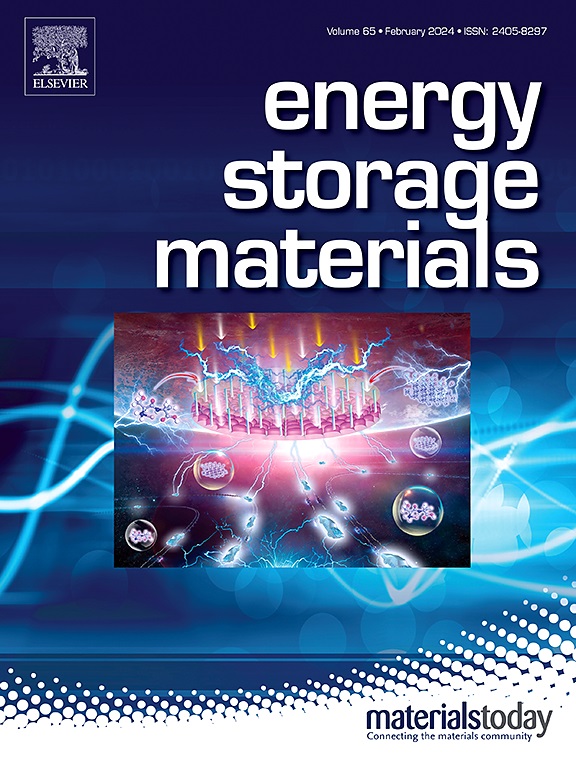Advancing NASICON solid-state electrolytes for lithium metal batteries: interfacial challenges, engineering strategies, and future directions
IF 20.2
1区 材料科学
Q1 CHEMISTRY, PHYSICAL
引用次数: 0
Abstract
Solid-state lithium metal batteries (SSLMBs) have emerged as a highly promising next-generation energy storage technology due to their superior safety and high energy-density. Among all solid-state electrolytes, sodium superionic conductor (NASICON) electrolytes are particularly noteworthy, offering high ionic conductivity, excellent air stability, and wide electrochemical window, making them one of the most extensively studied and technologically viable options. However, critical interfacial challenges persist between NASICON electrolytes and lithium metal anodes, including poor physical contact, insufficient chemical/electrochemical stability, and detrimental side reactions, all of which significantly hinder battery performance. These interfacial phenomena involve multifaceted complexities, such as intrinsic material properties, dynamic side reactions, and spatiotemporal evolution-processes, which are inherently difficult to observe using conventional characterization techniques. Here, this review systematically analyzes the interfacial issues between NASICON electrolytes and Li anodes, evaluating existing modification strategies (e.g., inorganic coatings, organic/polymer coatings, composite coatings, and anode protection mechanisms) and highlighting advanced characterization techniques which provide deeper insights into the dynamic interactions occurring at the interface, facilitating the rational design and optimization of solid-state batteries. Advanced characterization techniques are discussed for interfacial analysis. By leveraging advanced interfacial engineering strategies and characterization techniques, researchers can accelerate the development of safer, more efficient, and longer-lasting solid-state lithium batteries.
推进NASICON固态电解质用于锂金属电池:界面挑战,工程策略和未来方向
固态锂金属电池(sslmb)因其优越的安全性和高能量密度而成为极具发展前景的下一代储能技术。在所有固态电解质中,钠超离子导体(NASICON)电解质尤其值得注意,它具有高离子电导率、优异的空气稳定性和宽电化学窗口,使其成为研究最广泛、技术上可行的选择之一。然而,NASICON电解质与锂金属阳极之间的关键界面挑战仍然存在,包括物理接触不良、化学/电化学稳定性不足以及有害的副反应,所有这些都会严重影响电池的性能。这些界面现象涉及多方面的复杂性,如材料的固有特性、动态副反应和时空演化过程,这些都是传统表征技术难以观察到的。本文系统地分析了NASICON电解质与锂阳极之间的界面问题,评估了现有的改性策略(如无机涂层、有机/聚合物涂层、复合涂层和阳极保护机制),并重点介绍了先进的表征技术,这些技术可以更深入地了解界面上发生的动态相互作用,促进固态电池的合理设计和优化。讨论了界面分析的先进表征技术。通过利用先进的界面工程策略和表征技术,研究人员可以加速开发更安全、更高效、更持久的固态锂电池。
本文章由计算机程序翻译,如有差异,请以英文原文为准。
求助全文
约1分钟内获得全文
求助全文
来源期刊

Energy Storage Materials
Materials Science-General Materials Science
CiteScore
33.00
自引率
5.90%
发文量
652
审稿时长
27 days
期刊介绍:
Energy Storage Materials is a global interdisciplinary journal dedicated to sharing scientific and technological advancements in materials and devices for advanced energy storage and related energy conversion, such as in metal-O2 batteries. The journal features comprehensive research articles, including full papers and short communications, as well as authoritative feature articles and reviews by leading experts in the field.
Energy Storage Materials covers a wide range of topics, including the synthesis, fabrication, structure, properties, performance, and technological applications of energy storage materials. Additionally, the journal explores strategies, policies, and developments in the field of energy storage materials and devices for sustainable energy.
Published papers are selected based on their scientific and technological significance, their ability to provide valuable new knowledge, and their relevance to the international research community.
 求助内容:
求助内容: 应助结果提醒方式:
应助结果提醒方式:


